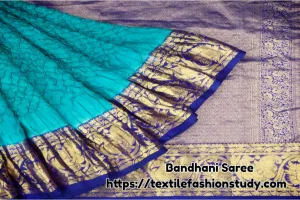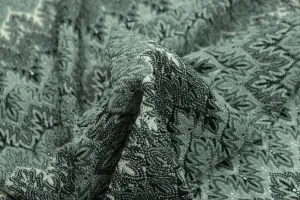Table of Contents
What is a Yarn Tensioning Device?
A tensioning device is an important element in the textile sector. In the winding process, yarns are transferred from one package to another. Therefore, during the winding process, the tension of the yarns should be controlled; otherwise, yarn breakage will increase because high tension or low tension will hamper the winding operation in spinning industry. So, the tensioning device plays a vital role in the winding.

Functions of Tensioning Device in Winding
During the time of winding; giving proper tension to the yarn is the object of a tension device. A tensioning device is used to control the tension of the yarn. If the yarns are irregular, thick, or thin, then they have a chance to break down due to overtension.
Effects of Yarn Tensioning Device
During winding, tension is applied to the yarn strand. Tension may be high or low. Tension has some effects, which are required to be known. The following are the effects of the tensioning devices: They are-
- Too high tension can damage the yarn. The breakage rate may be greater due to high tension. Too much tension also changes the elongation property.
- Too low tension can lead to unstable or loose packages that will not unwind clearly.
- Variation in yarn tension in different parts of the wound package can cause an undesirable package.
- Tension also affects artificial filament yarn. It can cause molecular changes in their physical structure. It also affects the color shading.
- For too high tension, staples or spun yarn may break at a thin place.
Requirements for Yarn Tensioning Device
There have different factors which influence the selection of tensioner. The followings are the requirements of tensioning device. They are-
- Firstly, the tension must be reliable to control uniform tension.
- Secondly, the tensioning device must be threaded.
- Thirdly, it must neither introduce non magnify tension variation.
- After that, it must not introduce differences in twists.
- Then, it must not be affected by wear.
- It must be easily adjustable.
- It must not be affected by the presence of oil or dirt.
- Therefore, it must not encourage the collection of dirt and lint.
- It must be capable of easy cleaning.
- The operating surfaces must be smooth.
- It must be inexpensive or cheap.
- Also, it must be simple in design or operation.
- It must not be because of yarn damage.
- Lastly, the tensioning device should be like that it would not affect the properties of the yarn.
So, the design of the tensioning device should be perfect.






2 comments
NAVODYA
This your website is very helpful but I want to know main functions of Tensioning devices.
Akhlaq
I need
What is high tesion and low tension ?